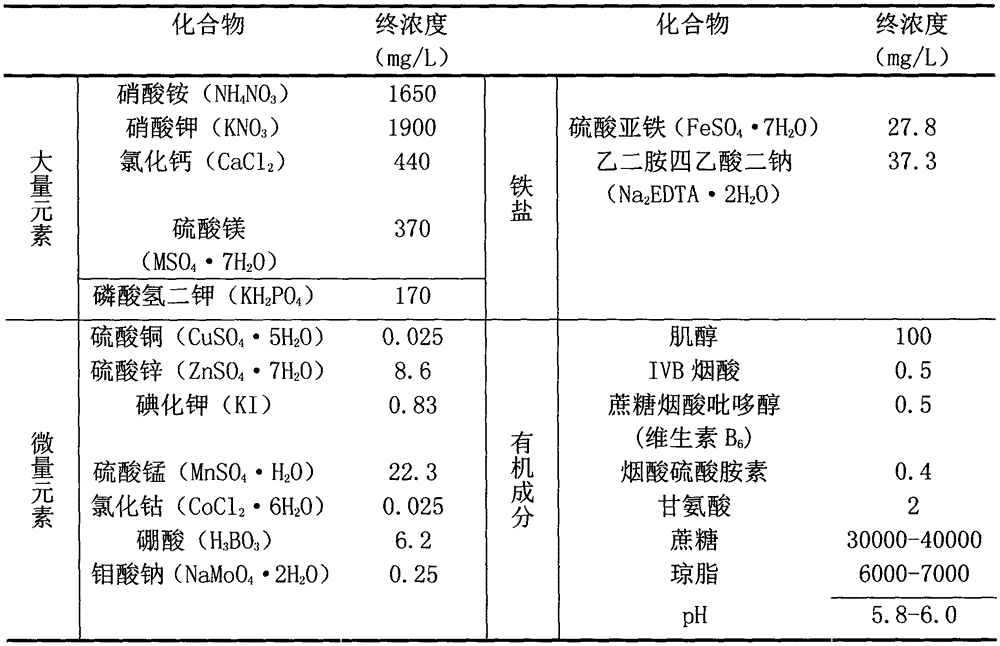Method of preparing haploid cells of Althaea rosea
A haploid cell and hollyhock technology, applied in plant cells and other directions, can solve the problem of low haploid frequency, and achieve the effects of good repeatability, good growth and fast induction speed.
- Summary
- Abstract
- Description
- Claims
- Application Information
AI Technical Summary
Problems solved by technology
Method used
Image
Examples
Embodiment 1
[0017] Preparation of solid medium: Add 2,4-dichlorophenoxyacetic acid, naphthaleneacetic acid, 6-benzylaminopurine, sucrose and agar to MS medium so that the final concentration of 2,4-dichlorophenoxyacetic acid is 1mg / L , the final concentration of naphthaleneacetic acid is 0mg / L, the final concentration of 6-benzylaminopurine is 1.5mg / L, the final concentration of sucrose is 30g / L, the final concentration of agar is 6g / L, adjust pH=5.8, at 121°C, Sterilize under the condition of 0.1Mpa pressure for 25 minutes, cool to room temperature, and set aside.
Embodiment 2
[0019] Preparation of solid medium: Add 2,4-dichlorophenoxyacetic acid, naphthaleneacetic acid, 6-benzylaminopurine, sucrose and agar to MS medium so that the final concentration of 2,4-dichlorophenoxyacetic acid is 1mg / L , the final concentration of naphthaleneacetic acid is 1mg / L, the final concentration of 6-benzylaminopurine is 1.5mg / L, the final concentration of sucrose is 30g / L, the final concentration of agar is 6g / L, adjust the pH=5.8, at 121°C, Sterilize under the condition of 0.1Mpa pressure for 25 minutes, cool to room temperature, and set aside.
Embodiment 3
[0021] Preparation of solid medium: Add 2,4-dichlorophenoxyacetic acid, naphthaleneacetic acid, 6-benzylaminopurine, sucrose and agar to MS medium so that the final concentration of 2,4-dichlorophenoxyacetic acid is 1mg / L , the final concentration of naphthaleneacetic acid is 2mg / L, the final concentration of 6-benzylaminopurine is 1.5mg / L, the final concentration of sucrose is 30g / L, the final concentration of agar is 6g / L, adjust the pH=5.8, at 121°C, Sterilize under the condition of 0.1Mpa pressure for 25 minutes, cool to room temperature, and set aside.
PUM
 Login to View More
Login to View More Abstract
Description
Claims
Application Information
 Login to View More
Login to View More - R&D
- Intellectual Property
- Life Sciences
- Materials
- Tech Scout
- Unparalleled Data Quality
- Higher Quality Content
- 60% Fewer Hallucinations
Browse by: Latest US Patents, China's latest patents, Technical Efficacy Thesaurus, Application Domain, Technology Topic, Popular Technical Reports.
© 2025 PatSnap. All rights reserved.Legal|Privacy policy|Modern Slavery Act Transparency Statement|Sitemap|About US| Contact US: help@patsnap.com

